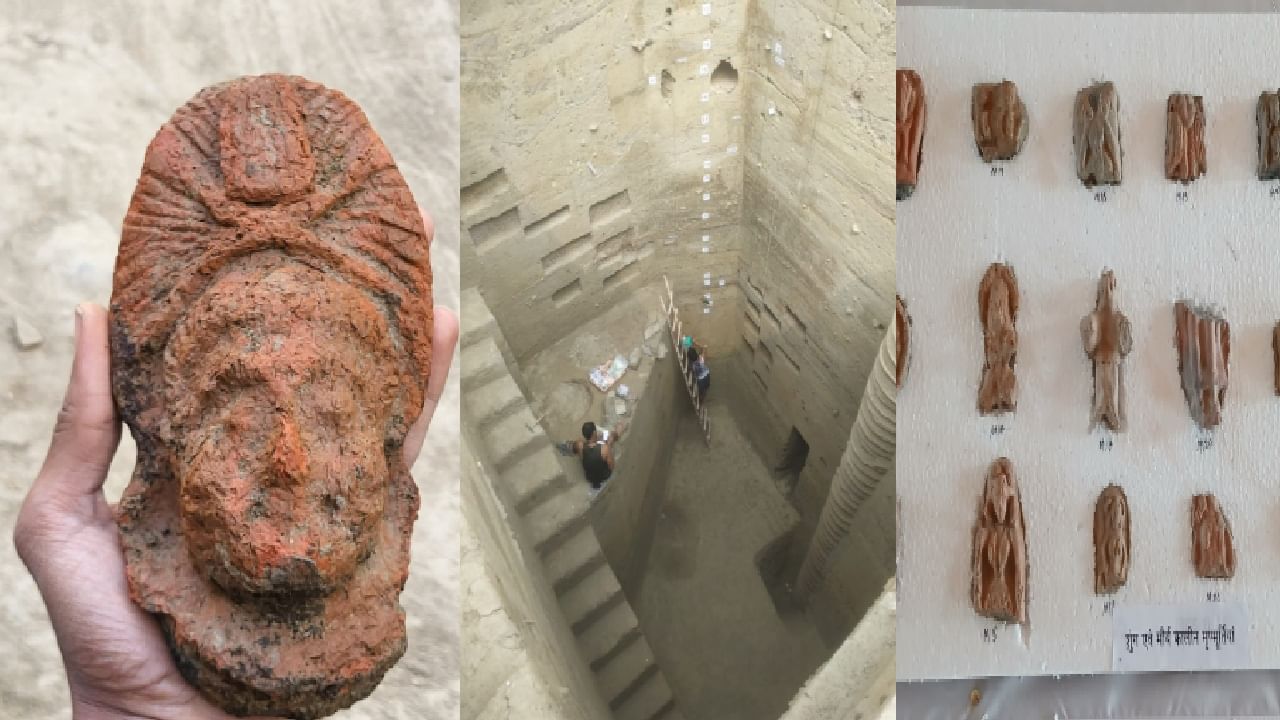New Delhi: The Archaeological Survey of India (ASI) has uncovered what appears to be the remnants of a thousand years old city in a village in Rajasthan’s Deeg district during an excavation exercise. The excavation exercise carried out in Bahaj village of the district unearthed some evidence related to five ancient civilisation, including metal weapons, statues, and utensils dating back to the Mahabharata era and the Maurya and Shunga dynasties.
Apart for this, ancient buildings made of earthen pillars and furnaces and objects made of iron and copper have been found in the excavation. Vinay Gupta, chief archaeologist of ASI, Jaipur, said, “The furnaces and metal objects tell how skilled the people of that era were in metallurgy. Tools made of bone, semi-precious stone beads and conch shell bangles tell the story of the craftsmanship of this region.
Mythical Saraswati river link found
A 23-metre-deep ancient river system, paleochannel, has also been found during the excavation. Many historians are linking it to the mythical Saraswati river that is mentioned in the Rig Veda. Gupta said, “The ancient water system was the foundation of the civilization that flourished on the banks of the Saraswati river. This paleochannel is the first specimen of its kind in Indian archaeology, which tells how the ancient water system gave rise to human settlements. This discovery in Bahaj village, located about 50 km from Mathura, has become a link connecting the cultural heritage of the Saraswati basin.”
Apart form this, the ASI team also found a human skeleton of the Gupta period (about 1700 years ago) during the excavation, which has been sent to Banaras Hindu University (BHU) for research. The discovery, made in April and May last year, has revealed traces of settlements that flourished from 3500 BC to 1000 BC.
Yagna, idols and Brahmi script
The excavation also unearthed 15 yagya kunds, sacred tanks built for worship and terracotta idols of Shiva-Parvati, which are older than 1000 BC. Apart from this, sand filled soil and copper coins were found in small pots in the yagya kunds of the Mahajanapada period.
ASI has submitted a detailed report of this discovery to the Ministry of Culture, which will decide on the conservation of this site. Gupta said, “This discovery gives an opportunity to open many untouched pages of ancient history of India. It not only unravels the mystery of River Saraswati but also tells the story of the scientific and cultural advancement of our ancestors,” he added.
